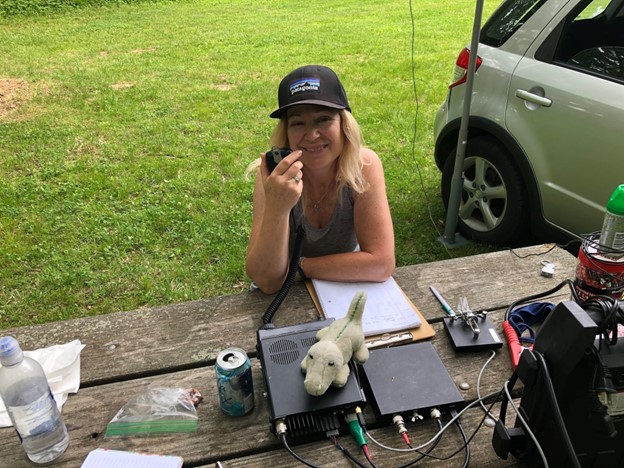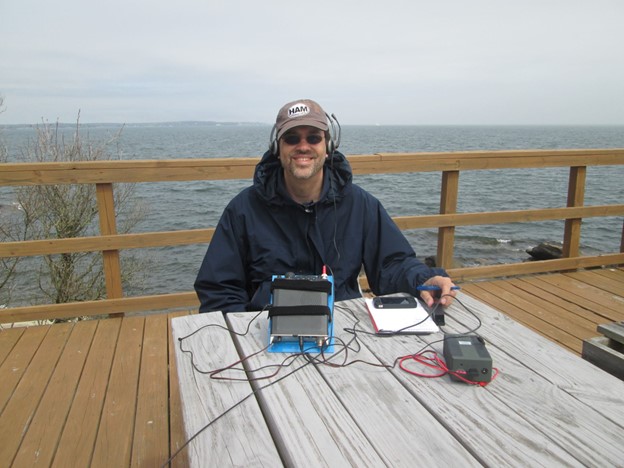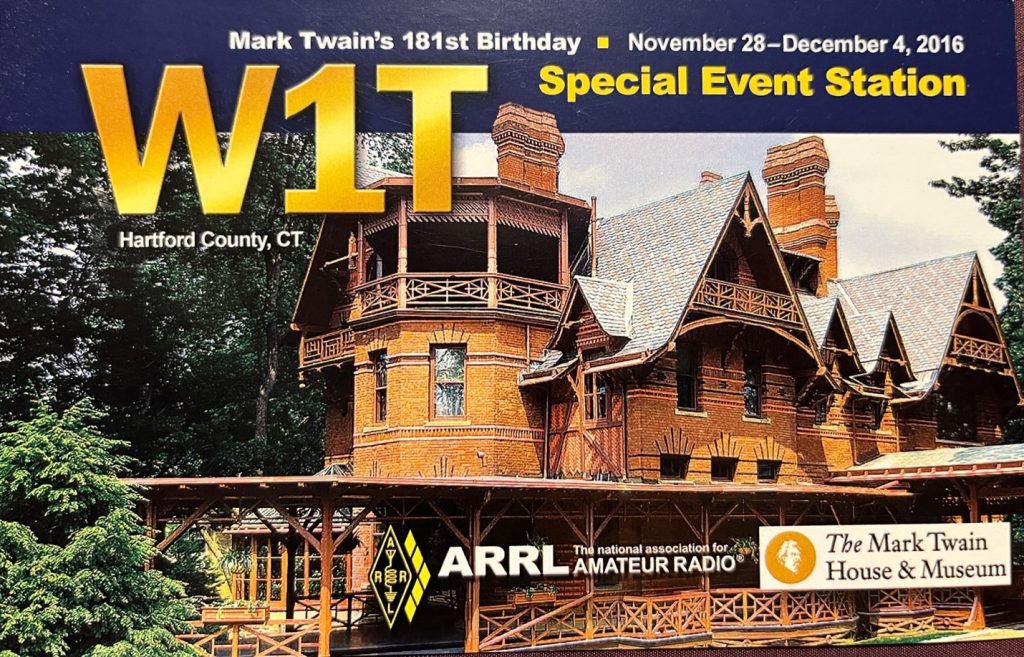One of the big things ham radio can teach us is geography. We learn about countries and small hunks of rock in a far-flung corner of the world, and if we’re lucky, we can make a contact with a ham there. Sometimes, that contact is made because of a DXpedition to a place where ham radio activity is rare for reasons of distance or lack of hams in the population. It’s a common occurrence for hams to make a contact with a rare entity and have thoughts of going on a DXpedition themselves, only to be jostled back into reality after looking at their most recent bank statement.
While the vast majority of us will never be on a major DXpedition, there are numerous ways you can make yourself the sought-after station and have lots of stations calling you, yet won’t require a second mortgage. Here are a few ways you can operate from the fun place: the Other Side of the Pileup.
DX Defined
DX commonly stands for “Distant Transmitter,” or “Distance X.” The notion is simple: how far or how rare a station is. But the definition of what DX is varies. We can all agree that a major DXpedition to a rare DXCC entity certainly counts as DX. Beyond that, rarity depends greatly on the bands or the context of the contact. Contacting a Caribbean island nation is pretty common on the HF bands; on the VHF bands, they become rarer. And many common Caribbean countries on HF are remarkably rare on satellite, for example.
Certain states are rarer on certain modes than others. And if you get into specific operating events or contests, rare locations can be remarkably close to your home location. So, the definition of “rare DX” can change depending on multiple factors.
The DX Game
In addition, let’s acknowledge the desire of many hams to pursue various operating achievements. We like collecting things: countries, states, grid squares, islands, parks, counties… even castles or special event certificates. Being aware of all these factors—changing definitions of DX, what bands and modes to use, what events to participate in and our desire to collect things—and using them to your advantage can make you the sought-after station. Find the rare target, then camp in a park, rent a cabin or VRBO/AirBnB, or operate mobile for select events as a “rover” from multiple locations and you’ll be working pileups in no time flat. Let’s look at some of the major scenarios you can use to be rare DX on a budget.
Contests
Contests generally have two goals: make as many contacts as possible and contact as many different geographic units at the same time to multiply your score. International contests use countries while domestic contests use states, ARRL sections, and Maidenhead grid squares. State QSO parties focus on counties for that state. All these locations can be quite rare in the context of the specific contest.
In general, to determine rarity of a state, grid or county, look at population. While there may be exceptions, the lower the population, the rarer that state, grid or county is likely to be.
ARRL November Sweepstakes has ARRL/RAC sections that are perpetually rare: Puerto Rico, The Northern Territories of the Yukon and Nunavut, and Newfoundland/Labrador. But not all of them involve a lot of travel. Nebraska is quite uncommon, especially on CW weekend. The Santa Barbara section in California always draws a crowd. Vermont can be uncommon, as can Idaho and the eastern half of Washington state. Look at the results of last year’s Sweepstakes on the ARRL Contest Results Database to see which sections had the fewest number of submitted logs and/or the fewest number of logged contacts from that section.
VHF contests use grid squares as the multiplier. With 488 grids in the continental United States to choose from, plus more in Canada and DX locales outside of the U.S., you have plenty of options. Plus, VHF/UHF antennas are generally smaller than their HF counterparts, making portable operation a bit simpler. One hundred watts on 6 or 2 meters with a small Yagi can do quite well for a portable station. Many 6-meter operators are pursuing the ARRL Fred Fish Memorial Award (FFMA) for working all 488 grid squares in the 48 contiguous states on 6 meters. You may be in a nearby grid that can help people complete that award.
State QSO parties are contests that focus on working counties in a specific state, or in a few cases, a region of states. QSO parties range from 8-10 hours to a full 48-hour marathon. Each state has counties that are rarer than others. Check out contestcalendar.com for a list of state QSO parties and the home page for each. Most QSO parties list the rare counties from the previous contest, or even a list of planned activity for the upcoming contest. Use those as a guide for finding rare counties in your state’s QSO party.
Operating Events
There are several “on the air” programs that track activity from certain types of geography:
Parks On The Air (POTA): National and state parks, recreation areas, wilderness areas, etc. There are thousands of them in the U.S. alone.

You don’t have to go far to be rare: Nancy, N9NCY, set up shop 40 minutes from her home in Illinois’ Middle Fork State Fish and Wildlife Area (K-4144) for Parks On The Air.
Using 100 watts and a dipole in a tree, N9NCY netted around 150 contacts with POTA enthusiasts after three hours of operating.
Summits On The Air (SOTA): Operating from mountain summits. Again, many targets to choose from worldwide.
US Islands: Over 17,000 islands within the borders of the United States to operate from. These can be found in lakes, rivers, streams, and along the coast of the U.S. You can drive to many of them.

For the US Islands “One Day Getaway” activity back in 2015, I was fortunate to get a landing permit for Outer Island in the Thimble Islands group off Connecticut in the Long Island Sound. Five watts and a simple multi-band dipole netted me almost 150 contacts in a few hours of operating.
County Hunting: Working all 3,077 counties in the U.S. is one of the greatest challenges in all of ham radio. A few have even accomplished this feat twice! Odds are you live close to a rare county you can activate, especially during a state QSO party. Check out MARAC.org for more information on activating rare counties near you.
Satellites
There are nearly two dozen satellites that hams can transmit on using the VHF/UHF bands. Grid squares are collected on satellites, and the gear is often extremely portable. Many satellite operators are chasing the AMSAT GridMaster Award for working all 488 grids in the lower 48 states via satellite. Can you help them accomplish this goal? Check out the GridMaster Heat Map for info on what grids are rare on satellite. Check out the AMSAT website for info on getting started on satellites, or watch my video series for DX Engineering on getting started on satellite.
Special Event Stations
Special event stations generally exist to help promote an event like a city’s birthday, a holiday, or a community event. If you don’t have anything like that, you can make up your own! Find a significant date in history for your city, county or state, or an upcoming municipal event like a parade or an open house and set up a special event station to commemorate that event. ARRL maintains a list of upcoming special event stations; take a look at the list for inspiration on events in your area you could commemorate.

The QSL card for my W1T Special Event Station operation from the Mark Twain House and Museum in Hartford, Connecticut. I made nearly 400 contacts from Mark Twain’s carriage house driveway on November 30, 2016, what would have been Twain’s 181st birthday.
Portable Gear Works Just Fine
As for antennas, smaller can be just fine. A hundred watts with a resonant dipole will do remarkably well for most domestic contests and operating events. Even a quality end-fed half wave (EFHW) antenna will do quite well. Smaller VHF/UHF Yagis can also make a big difference when operating in the field. If you’re mobile in a state QSO party, mobile whips/hamsticks can work well in a pinch; just take the extra time to work on grounding and bonding to your vehicle to maximize your mobile whip’s efficiency.
Being on the other side of the pileup is a tremendous amount of fun. It can also serve as good training for emergency communications-minded operators. The gear doesn’t have to be complex, the antennas can be relatively simple, and it doesn’t have to cost very much. By adapting your definition of DX and finding rare places that cater to specific groups of hams, you can get that rare DX feeling without risking life and limb, or your kids’ college education. If you’ve never tried portable operating before, start small; a county operation in a state QSO party or a nearby park that qualifies for Parks On The Air is a good first step. Go to the relevant websites and look for a unit near you, pack up the car, and go for it! Take notes on what worked and what didn’t to help you make the next operation better.
See you on the air from a rare location soon!

